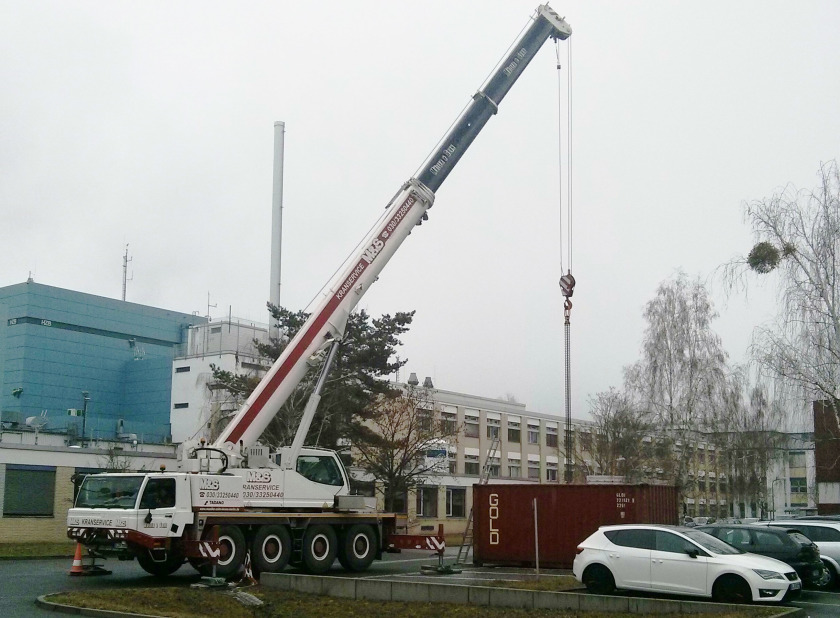The BioRef neutron instrument to be set up again at ANSTO in Australia

BioRef was transported from HZB on December 19, 2016 and shipped to Australia. The trip will take about two months. © D. Höcker/HZB
The BioRef neutron instrument commenced its roughly two-month journey from HZB to Australia on December 19, 2016. It will be set up again at the OPAL neutron source there, part of the Australian Nuclear Science and Technology Organisation (ANSTO) in Sydney. It is expected to be available to the international scientific community beginning in 2018 under the name "Spatz".
ANSTO operates the OPAL neutron source as part of the Centre for Neutron Scattering in the Lucas Heights quarter of Sydney. OPAL is one of the newest and most successful neutron sources in the world and ANSTO is planning further expansion of the neutron source and neutron research.
There has been close cooperation with the HZB for several years, in particular in research on energy materials. The two institutions entered into a new agreement in October 2016 to intensify this cooperation. Among other aspects, they will strive for an active exchange of ANSTO and HZB scientists, and they intend to cooperate more closely in the area of support for junior scientists as well. ANSTO is taking over the BioRef reflectometer, which facilitates research on soft matter, solid/liquid interfaces, and thin films, from the BER II neutron source in Berlin that will close at the end of 2019.
BioRef was packed up in December and shipped to Australia. It will be set up anew at ANSTO and commissioned in 2017. It will then become available for research again beginning in 2018 under the name “Spatz”, a reference to its German origins. Instrument time will be explicitly reserved there for the German user group.
In order to ensure the transfer of knowledge to the neutron community and the continued use of neutron instruments, HZB is also working on cooperative agreements with other research institutions in Europe and the world.
red.
https://www.helmholtz-berlin.de/pubbin/news_seite?nid=14596;sprache=en
- Copy link
-
HZB and National University Kyiv-Mohyla Academy start cooperation in Energy and Climate
Helmholtz-Zentrum Berlin für Materialien und Energie GmbH (HZB) and the National University of "Kyiv-Mohyla Academy" (NaUKMA) have signed a Memorandum of Understanding (MoU). The MoU serves as the starting point for collaborative research, academic exchange, and capacity-building between the two institutions. Actions will be taken to establish the Joint Research and Policy Laboratory at NaUKMA in Kyiv. The aim of the future laboratory is to jointly develop research and policy analysis, focusing on the energy and climate dimensions of Ukraine’s EU integration.
-
MAX IV and BESSY II initiate new collaboration to advance materials science
Swedish national synchrotron laboratory MAX IV and Helmholtz-Zentrum Berlin (HZB) with BESSY II light source jointly announce the signing of a 5-year Cooperation Agreement. The new agreement establishes a framework to strengthen cooperation for operational and technological development in the highlighted fields of accelerator research and development, beamlines and optics, endstations and sample environments as well as digitalisation and data science.
-
Michael Naguib is visiting HZB as a Humboldt Research Awardee
Professor Michael Naguib, from Tulane University in the USA, is one of the discoverers of a new class of 2D materials: MXenes are characterised by a puff pastry-like structure and have many applications, such as in the production of green hydrogen or as storage media for electrical energy. During his Humboldt Research Award in 2025, Professor Naguib is working with Prof Volker Presser at the Leibniz Institute for New Materials in Saarbrücken and with Dr Tristan Petit at HZB.
